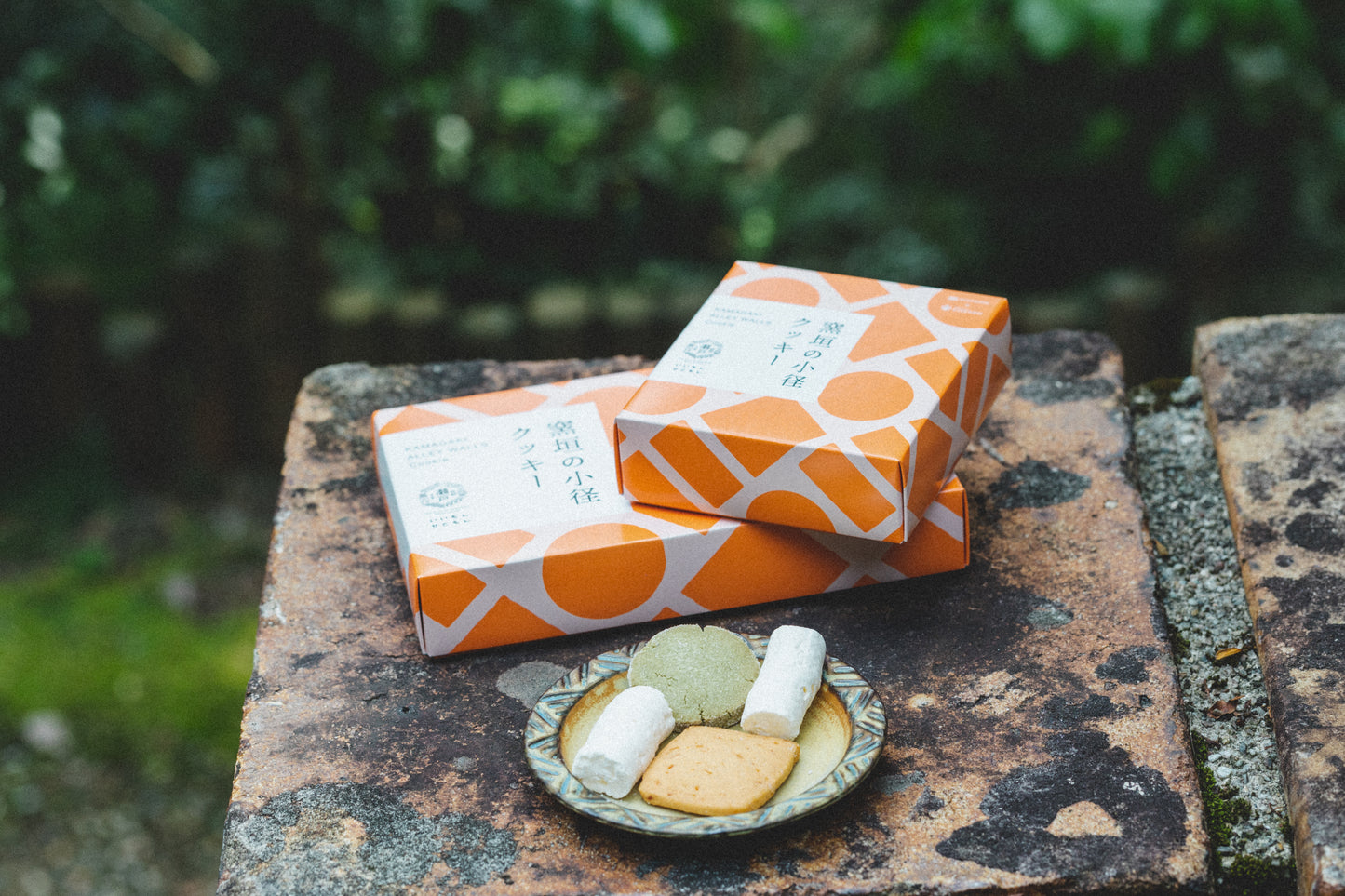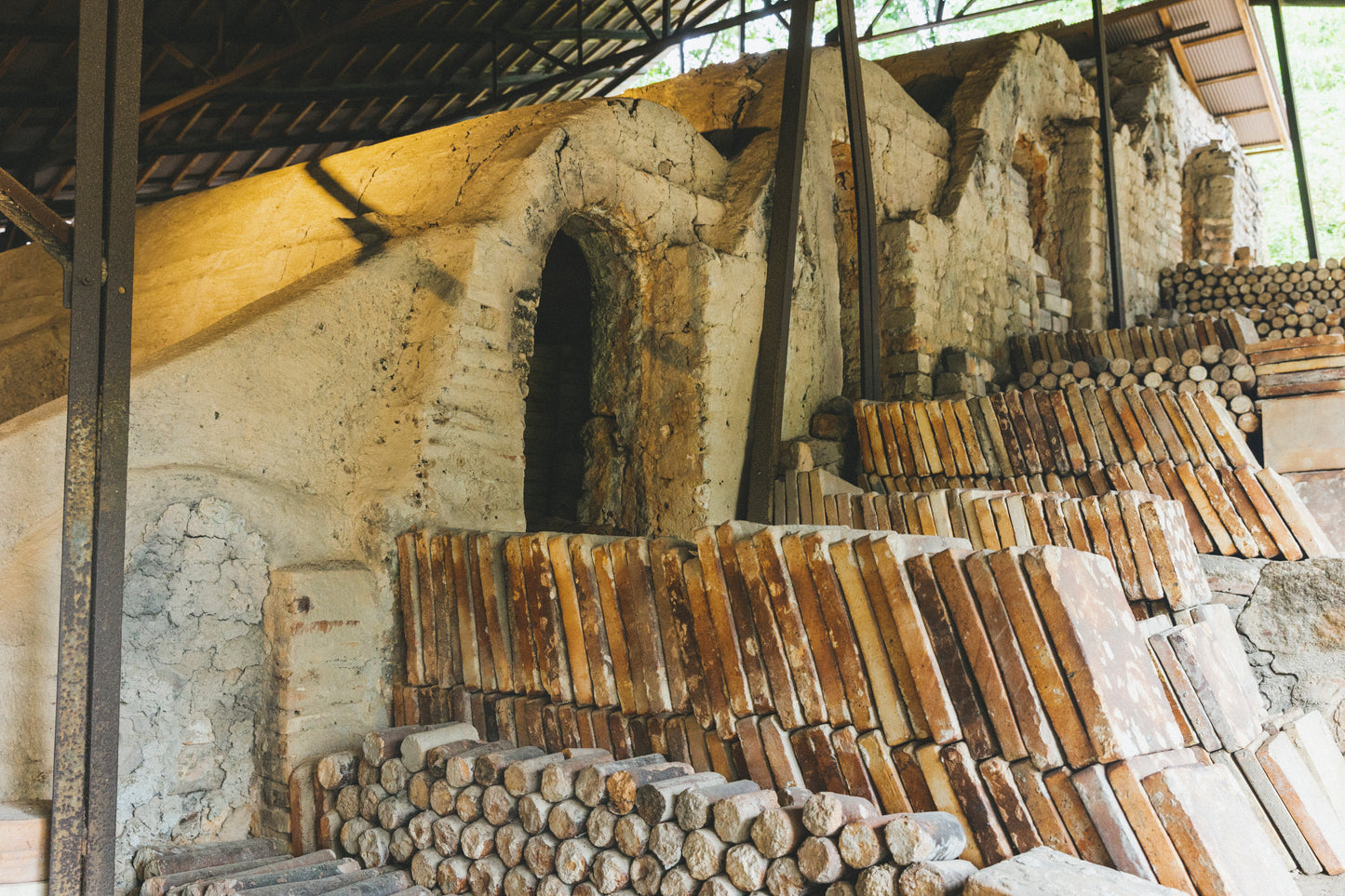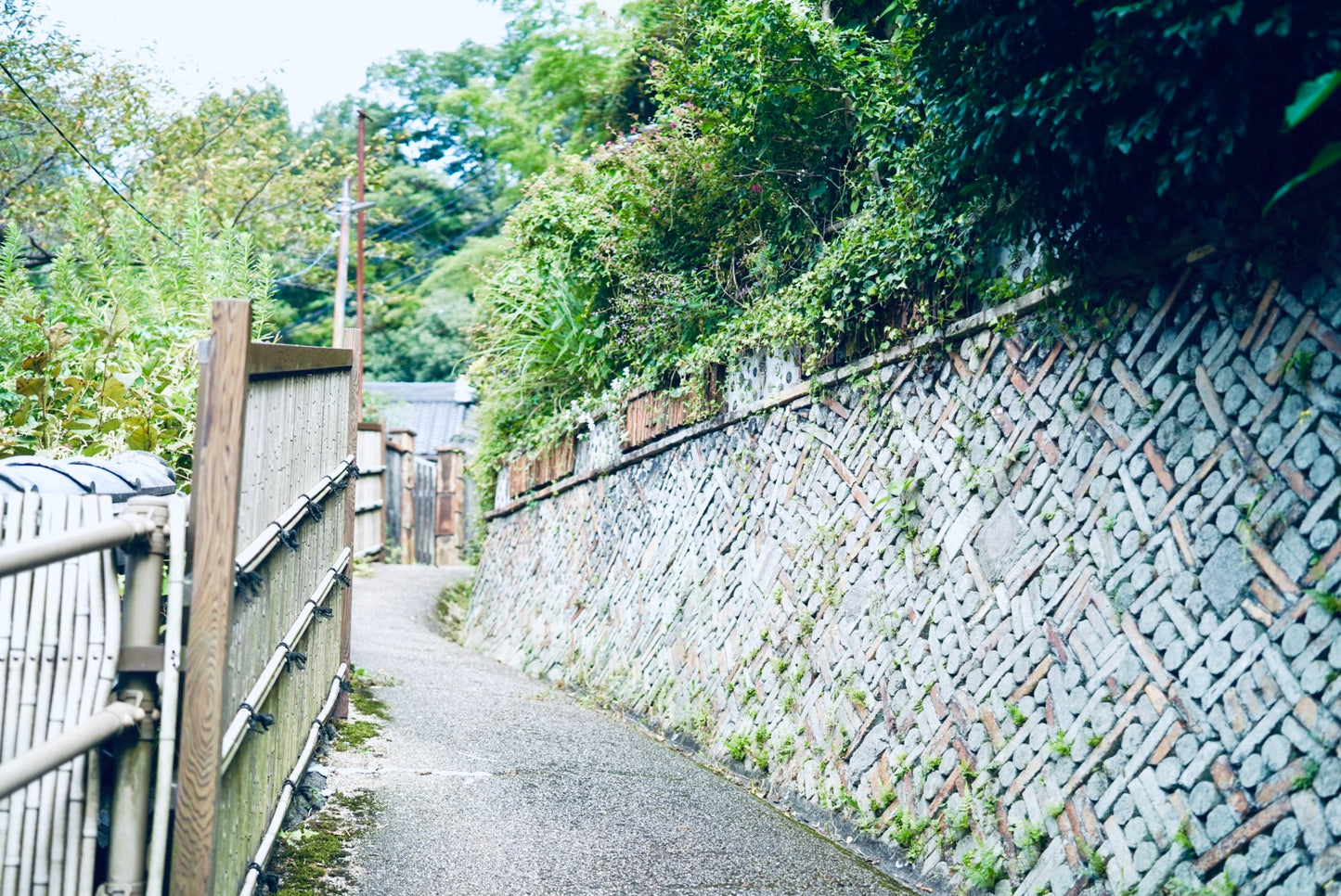




Souvenirs that convey the scenery of Seto, the pottery capital
Seto City, Aichi Prefecture, is a pottery production area that has been producing pottery for over 1,000 years. This is an original Hitotsuchi souvenir, featuring cookies depicting the scenery of this pottery city, Seto.
 Each large box contains four individually wrapped bags.
Each large box contains four individually wrapped bags.
There are three flavors: matcha rice flour sable, coconut meringue cookie, and orange peel cookie.
What is the "kamagaki" landscape that can only be seen in Seto?

A "kamagaki" is a stone wall made by piling up kiln tools that were once used in climbing kilns. In Seto, large quantities of pottery were once fired in climbing kilns. The photo shows a climbing kiln that remains in the Seto Folk Crafts Museum,a museum created by Seto Hongyogyo , which renovated its workshop. Climbing kilns are built on the slopes of mountains and have a room with a hole in it called a firing chamber, as shown in the photo, where the pottery to be produced is packed tightly and fired.
What are the kiln tools used in climbing kilns?
At that time, kiln tools such as a stand (tanaita) for firing the pottery, pillars (tsuku), and covers (engoro) to prevent the pottery from falling over are used to pack more pottery into the kiln.

Tanaita (shelf board)

Tsuku (pillar)

N'Golo (cover)

This is what it looks like inside. Kiln tools are used over and over again in climbing kilns, so they gradually weaken, and when they crack or break, their usefulness ends. However, pottery does not burn, even when fired at 1,300 degrees. In other words, once their usefulness is over, they become industrial waste. So the craftsmen of the time decided to make effective use of these tools by turning them into kiln walls.
Kiln tools that have completed their role are sent to the kiln wall

They look like geometric art. Some are very messily stacked and weathered, while others are beautifully stacked, which is another fascinating aspect of the area. The existence of this many kiln walls means that an incredible amount of pottery was released into the world. And how many artisans were there to make it? It's a very quiet path now, but it's exciting to imagine what it must have been like back then.



Collaboration with Patisserie EISENDO, a Western-style confectionery shop that has been in business since the Meiji era
Patisserie EISENDO Seto branch started out as a Japanese confectionery shop called Eisen-do during the Meiji period, and was born as a Japanese confectionery shop that makes kashiwamochi (oak leaf mochi) and sekihan (red rice).
The third generation owner trained at both Japanese and Western confectionery shops in Seto City, and began selling Western confectionery as well.The current fourth generation owner then went on to specialize in Western confectionery, and the shop became a specialty shop. It moved to its current location in 2019 and now resembles a candy castle.

The store is always bustling with people, with over 40 types of fresh sweets on display. The Shinano Roll, a beloved Seto souvenir among many locals, is a popular item that has sold as many as 800 rolls in a single day, and has been selling well for over 15 years.
Three types of cookies with different flavors and textures

[From the owner, Emiko Ito]
"Engoro is made with rice flour and is moist. The matcha is not very rich, but has a slightly bitter taste that makes it easy to eat. Tsuku is made by adding coconut fines to the meringue and baking it at a low temperature. Tanaita is a little harder, and we add chopped orange peel. Each has a different texture, so I think you will enjoy the taste and texture!"
Comment from Shintaro Minami, CEO of "Hitotsuchi"

"At Hitotsuchi, we are working on a souvenir project that conveys the scenery of Seto, a pottery-producing region, and after more than six months, we have finally completed it. We would be happy if tourists would buy it as a souvenir, and if local residents would buy it as a small present."
[Product information]
Name: Baked confectionery ( Kamagami Path Cookies)
Ingredients: Wheat flour (domestically produced), butter, sugar, eggs, rice flour, coconut, candied orange, matcha, meringue, orange juice, salt / flavoring (vanilla paste), (contains wheat, eggs, dairy ingredients, orange, coconut)
Contents: 4 bags Best before date: Approximately 1 month from the date of shipment Manufacturer: EISENDO Co., Ltd. Seto Store
Seller: Hitotsuchi
Nutritional information (per bag): Estimated values: Energy 180kcal / Carbohydrates 22.5g / Protein 1.7g / Salt equivalent 0.28g / Fat 8.9g
⚪︎Please consume as soon as possible after opening⚪︎Matcha rice flour cookies may lose their color and flavor if exposed to strong light.





